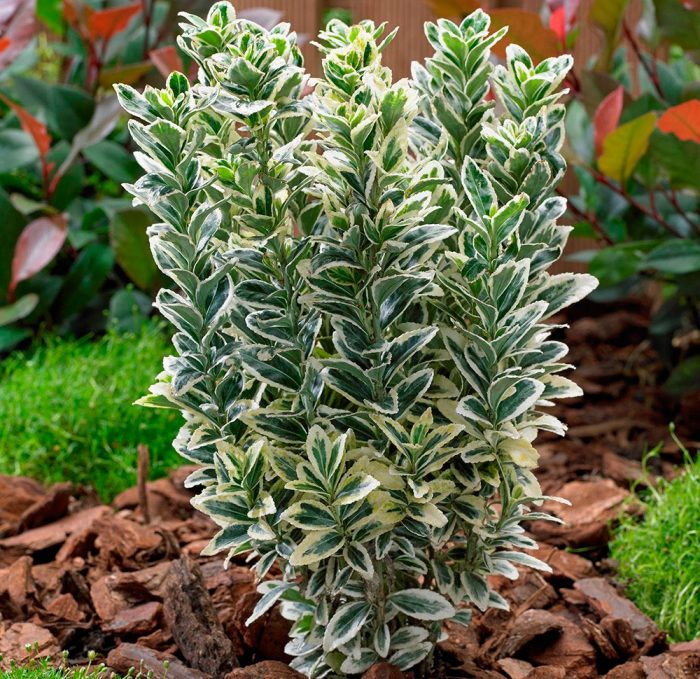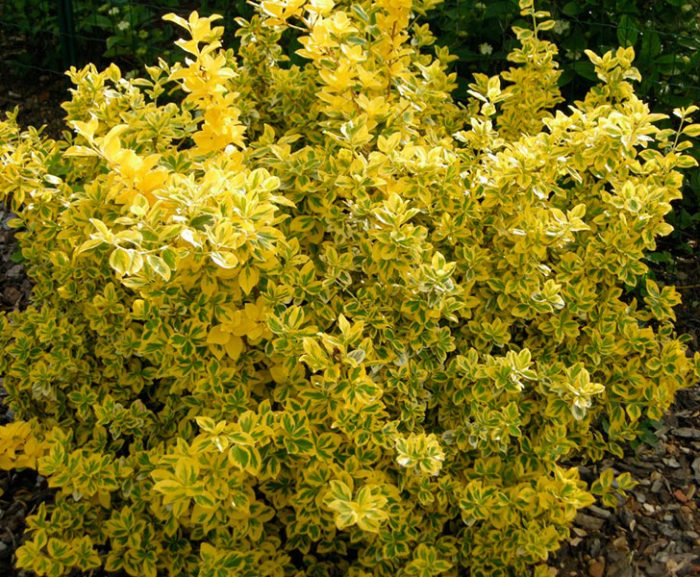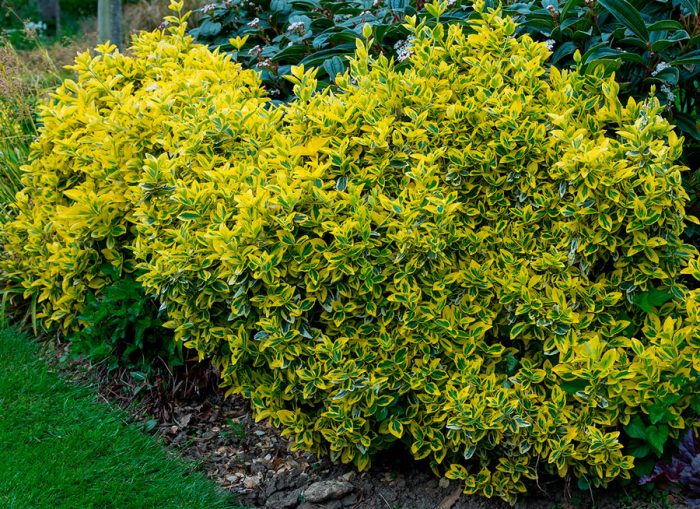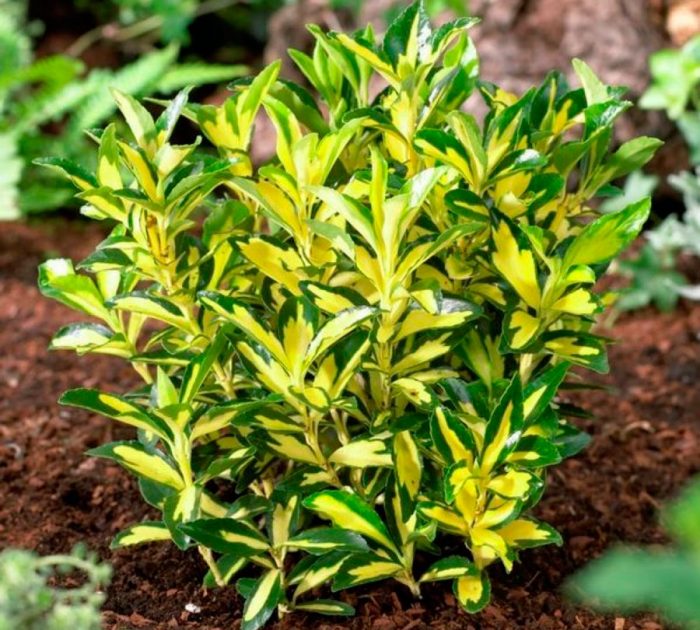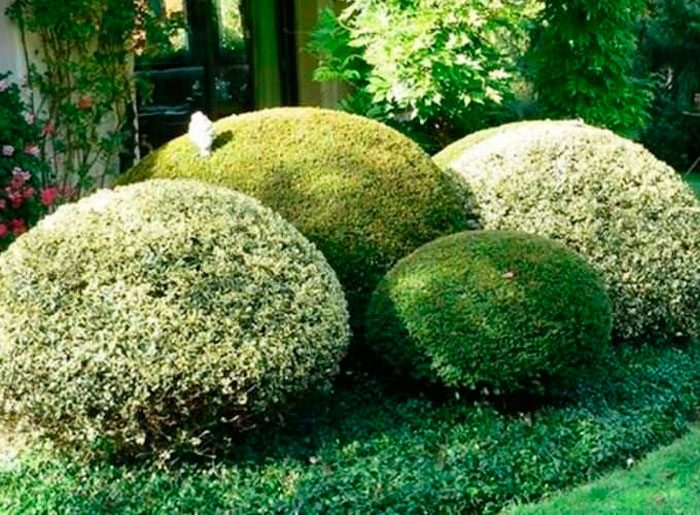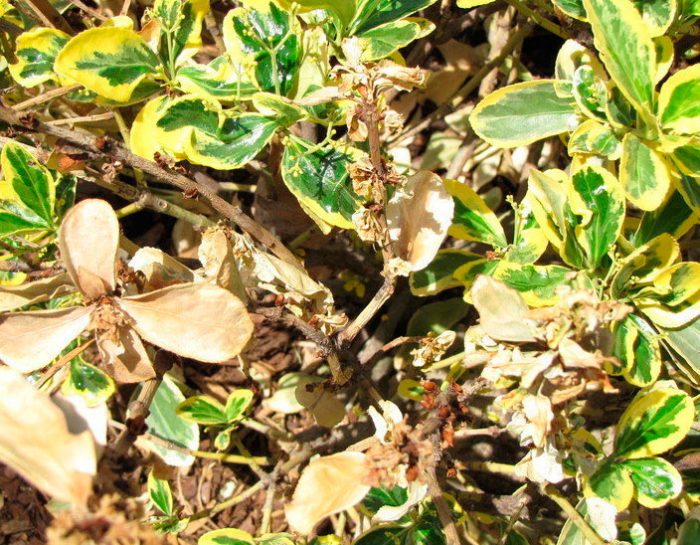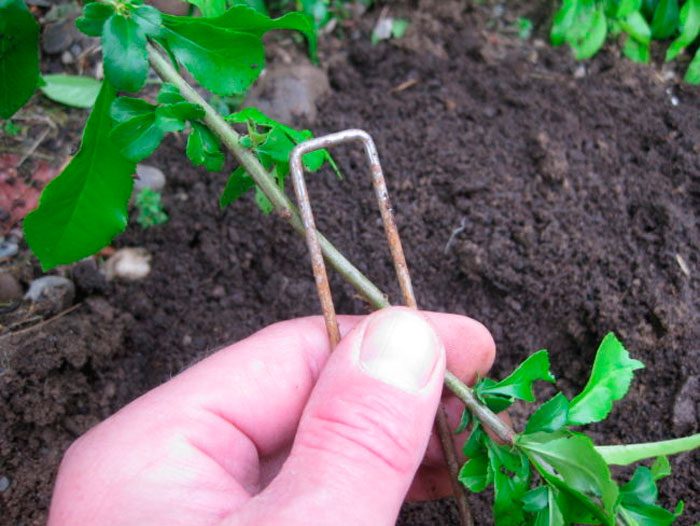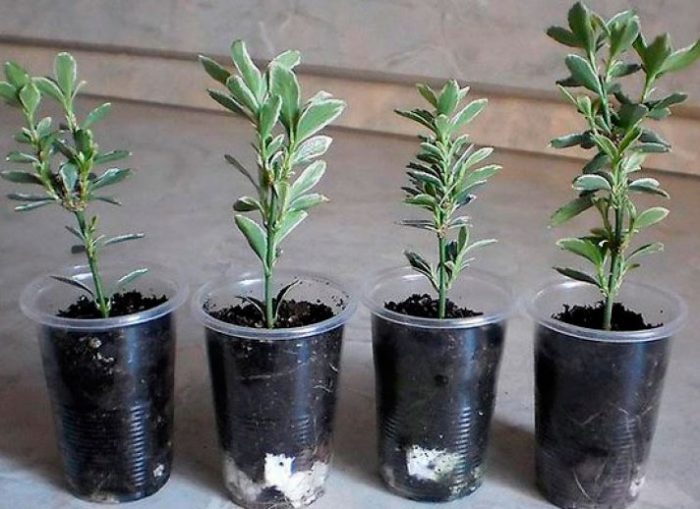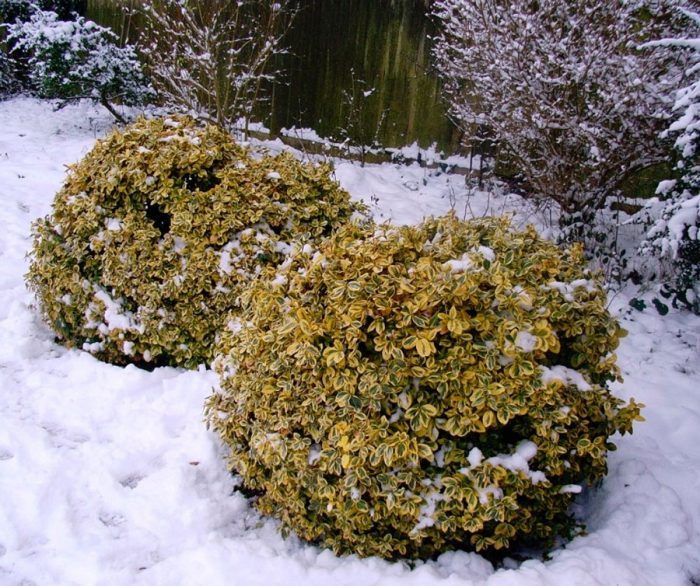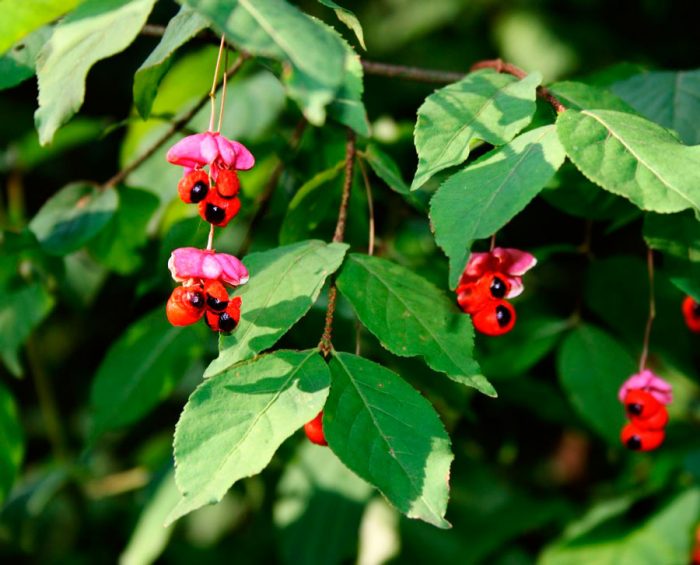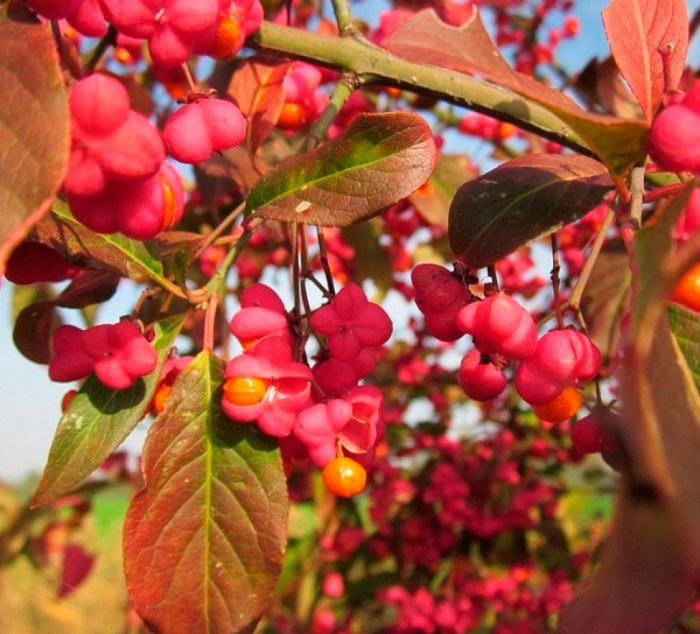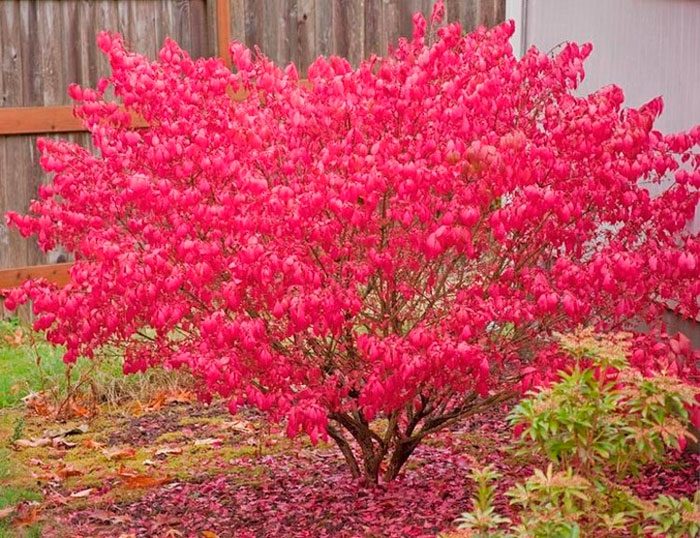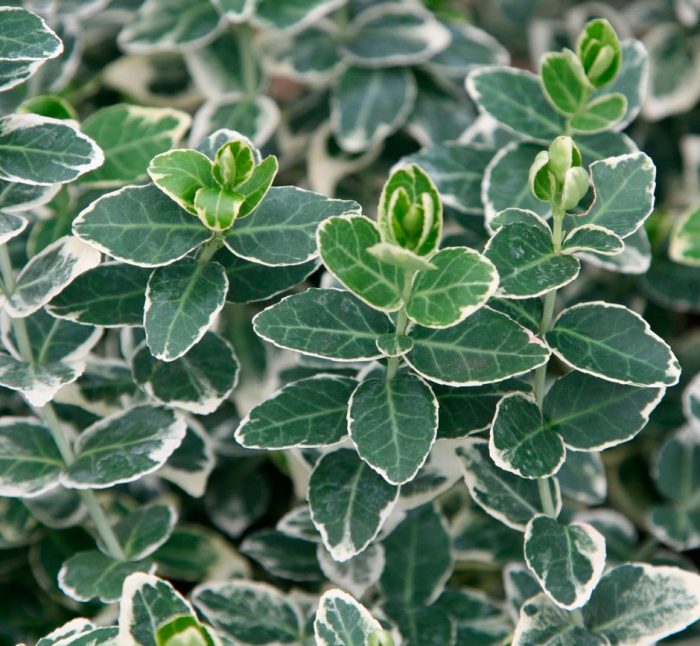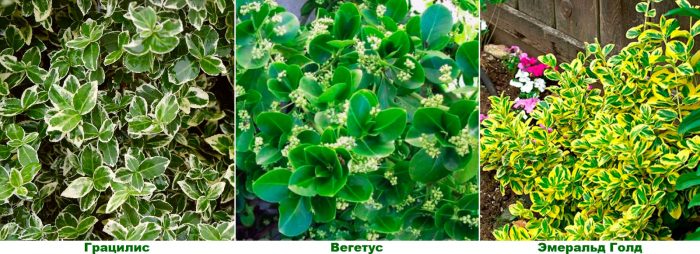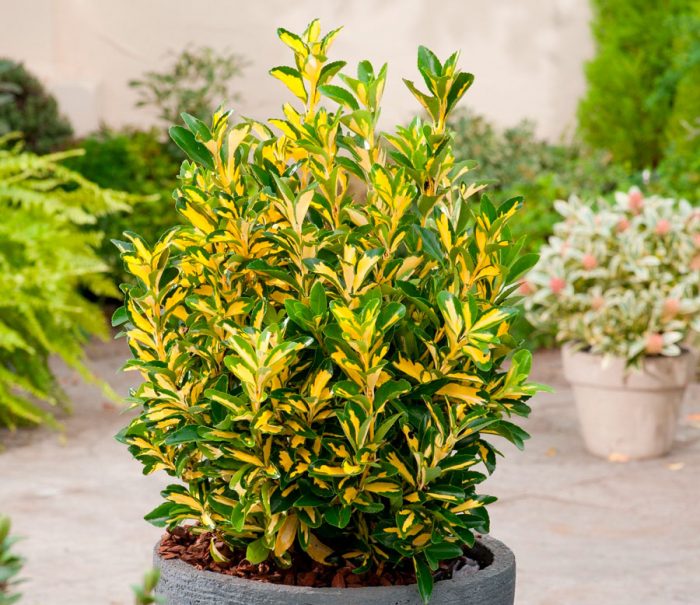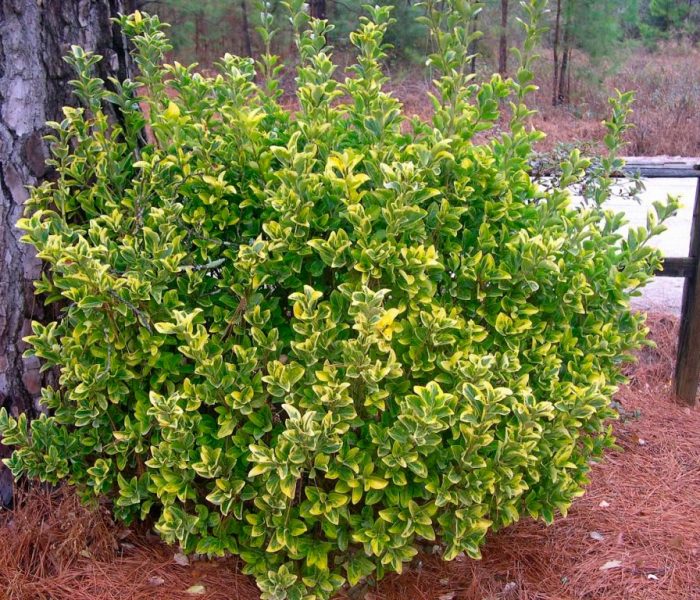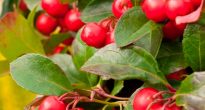The Euonymus plant is part of the Euonymus family. This genus, which unites more than 200 species, is represented by low deciduous and evergreen woody plants. Under natural conditions, such a plant can be found in Asia, America, Europe and Australia. This shrub is widespread throughout the Northern Hemisphere, and it prefers to grow in river floodplains, valleys and undergrowth of mixed forests. The scientific name of euonymus translated from Latin means "glorious tree", or "tree with a good name." Among the Slavs, this plant has a large number of names, namely: divine eyes, burusklen, sour, lingonberry, privet, wolf earrings, blind pot, night blindness, bruslin, mersklet, dereskled, heather, wolf bast and saklak.
Most species of euonymus are cultivated as ornamental plants. For example, in landscape design, they are used to decorate fences or farm buildings. On the garden plot, a hedge is often created from euonymus, while it looks very decorative both in the summer and in the autumn months. Species such as European spindle tree and warty euonymus are used not only for decorative purposes, but also for the extraction of gutta-percha, which is contained in the shoots, as well as in the bark of the plant.
Content
Brief description of cultivation
- Landing... At the very beginning of the spring period or in the fall, during leaf fall.
- Illumination... Green-leaved species grow well in partial shade, and variegated ones need a lot of bright light.
- Priming... It should be slightly alkaline or neutral, light, nutritious and water permeable.
- Watering... Moisten the ground only when necessary. If it rains regularly during the growing season, then the euonymus will not need watering.
- Fertilizer... Top dressing is carried out in early spring and autumn, using complex mineral fertilizer for this.
- Pruning... In early spring, or at the end of fruiting, both sanitary and formative pruning are carried out.The crown can be given a conical or ellipsoidal shape.
- Reproduction... By seed method, as well as cuttings, dividing the bush or layering.
- Pests... Spider mites, mealybugs, caterpillars and aphids.
- Diseases... Powdery mildew and trunk rot.
Features of euonymus
The cross-section of euonymus stems can be round or tetrahedral; cork growths can form on their surface. Some of the species growing in nature can reach a height of about four meters. Opposite glossy simple leaf plates serrated along the edge are painted in a dark green shade. However, in some varieties, the surface of the foliage is decorated with specks of white, silver or cream, and they can be located along the edge of the plate or in its middle. During flowering, flowers of a cream, greenish-yellow or burgundy hue are formed on the bush, they are inconspicuous and have a not very pleasant aroma. Flowers of 4 or 5 pieces are collected in corymbose or racemose inflorescences. The fruit is a leathery and dry capsule, which can be four or five nests, as well as winged or prickly, with seeds inside it. During ripening, depending on the species, the fruit turns scarlet, burgundy, dark purple, pink, raspberry or yellow. The seedlings of such a plant have a rich color. In all parts of the plant, including fruits, contains poison!
Planting euonymus in open ground
What time to plant
Best of all, euonymus takes root after planting in early spring, but you can also plant this plant in open ground in the fall. For a shrub, it will be better if it is in a little shade, but for variegated varieties it is better to choose a sunny area. The soil on the site can be neutral or slightly alkaline, light, rich in nutrients and well-drained. If the soil in the area is acidic, then it can be corrected by liming, which is carried out before planting the plant.
In addition, when choosing a site, it is necessary to take into account the fact that euonymus reacts extremely negatively to the high occurrence of groundwater. It should also be remembered that the bush grows quite wide in width, and some species grow in height. In this regard, when planting a plant, observe the recommended distance between the bush and the structure or other plant. If you decide to cultivate dwarf species of such a shrub, then it is better to use large pots or boxes for planting them. In summer, such euonymus is kept in the garden, and in late autumn it is transferred to an unheated cool room for the winter. In this case, the same bush can be considered both a garden and an indoor crop.
Landing features
You need to prepare a pit for planting no later than half a month before planting a seedling. Its volume should be 1.5 times the plant's root system. When preparing the pit, the top layer of soil is not thrown away, but combined with compost. At the bottom of the planting pit, make a drainage layer; for this, use broken brick or sand. The drainage is covered with a small amount of earth mixed with compost. In the event that the soil on the site is acidic, then 0.2 kg of lime is poured into each pit, which is preliminarily quenched, and then combined with the soil and compost. Place the bush in a planting hole and gently spread its root system. Fill the hole with soil mixed with compost, and you need to fill it up gradually, regularly tamping the soil mixture so that there are no air pockets left in the hole. After planting, check that the root collar is flush with the surface of the plot. If you decide to create a hedge from euonymus, then it is better to make a trench for planting, not a hole. The planted bush needs to be watered well. Moisten the soil every day for a week.
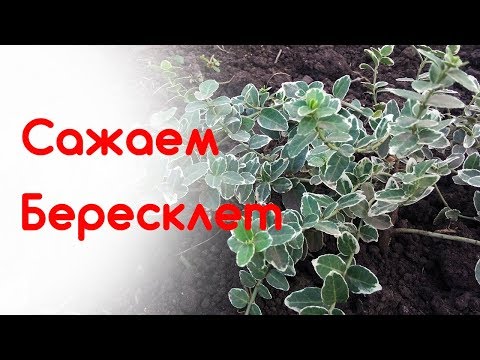

Watch this video on YouTube
Spindle tree care
Watering
Water the euonymus only if necessary. To make it much easier to care for it, cover the surface of the trunk circle with a layer of mulch (dry soil), and this should be done immediately after watering. During the season, loosen the soil surface in the near-trunk circle at least three times; this procedure is carried out 1-2 days after watering. In the event that the summer is not dry and it rains regularly, then there is no need to water the plant. Remember that stagnation of fluid in the root system is very harmful to the euonymus.
Fertilizer
In order for the shrub to develop and grow normally, it must be fed twice during the season, namely: in spring and in autumn. For this, a complex mineral fertilizer is used.
Pruning
Euonymus needs regular pruning, due to which the bush begins to branch much more strongly, which has a positive effect on its decorative effect. Remember that in most species of such a plant, fruits are considered decoration. That is why it is recommended to cut the bush in order to form the crown at the very beginning of spring or at the end of fruiting. During the growing season, only sanitary pruning is carried out: shoots thickening the crown are removed, injured and weak stems are cut out, and the upper parts of the branches are pinched. Formative pruning allows you to give the crown an ellipsoidal or conical shape. Quite often, such a plant is formed in the form of a standard tree.
Diseases and pests
Most often, mealybugs, caterpillars, aphids, as well as spider mites settle on the bush. Spider mites and aphids feeding on plant sap cause dots of a pale silver color to appear on the leaf plates at the puncture sites. Over time, deformation of young shoots and foliage occurs. To get rid of these pests, the plant is sprayed 3 times with Actellik's solution (1–2 milligrams per liter of water). Treatments are carried out at intervals of 1 week.
If honeydew and cotton-like formations appear on the foliage of the bush, this means that mealybugs have settled on it. In this case, the euonymus is treated twice, using the solution of Confidor, Aktara and Fitoverm. The interval between treatments is 1–1.5 weeks.
All caterpillar nests that you see on the bush are recommended to be cut off with your hands and destroyed with fire. An interesting fact is that if caterpillars settle on the euonymus, then they will definitely not be on the nearby fruit trees. You might even think that euonymus, trying to save your harvest, "takes a hit" on itself!
Euonymus is quite resistant to diseases, but it can still get sick with trunk rot or powdery mildew. Trunk rot is classified as a dangerous fungal disease, which is extremely difficult to cure. It is much easier to prevent her from damaging the plant, for this, in the spring and autumn, preventive spraying of the plant is carried out, and for this, a solution of Bordeaux liquid (1%) or means of a similar action is used. All affected areas are cut and destroyed. If the bush is very badly affected, then it can no longer be saved. In this case, it is dug up and burned.
Powdery mildew also refers to fungal diseases. In order to save the bush, it needs to be treated 3 or 4 times with a solution of a fungicidal drug, for example, Topaz, Previkura, Skor or Fundazol. The break between spraying should be 7 days.
Reproduction of euonymus
For reproduction of euonymus, the seed method, dividing the bush, layering and cuttings are used. Variegated varieties, as well as those that have yellow or red foliage, can only be propagated by vegetative methods.
Layers
In springtime, choose stems that grow very low in relation to the soil surface. Make grooves under them in the ground and lay the selected stems in them, which are fixed in this position and covered with earth.The roots of the cuttings grow very quickly. And when they are fully rooted, they can be separated from the mother plant and transplanted into a new permanent place.
Cuttings
For harvesting cuttings, bushes older than 5 years are used. Cuttings are cut in June – July using the upper parts of semi-lignified stems. In length, the cuttings should reach about 70 mm, and each of them should have one internode. Treat the cut with a root-stimulating agent, after which it is planted in sand, combined with peat, for rooting. Cover the cuttings with a transparent hood and place them in a cool, well-lit area. The cuttings will take root completely after 6–8 weeks, after which they are transplanted into the garden on a training bed and grown.


Watch this video on YouTube
Root offspring
In early spring, immediately after the soil in the garden warms up, select the strongest root suckers, the height of which should not be more than 0.4–0.5 meters, and cut them off from the parent bush. The length of the root of the offspring should be from 25 to 30 centimeters, and in diameter it should reach at least 15 mm. Dig out the offspring and, without removing the soil from the roots, either plant it in a permanent place, or grow to the desired size.
Dividing the bush
This method is perfect for breeding dwarf varieties. The fact is that their root system is not very deep, and every year they have a new root growth. Take a sharp shovel and carefully chop off the root shoots with it, grabbing a small part of the rhizome, separating it from the parent bush. Shoots at the shoots are shortened by 2/3, after which the cut is planted in a previously prepared hole in a new place. This procedure does not harm the plant, and he tolerates it quite well.
Seed reproduction
Near the spindle tree, newly collected seeds are sown directly into the open ground, and this is done in the autumn. Crops in late autumn are covered with a layer of mulch (straw or dry foliage). You can sow seeds in the spring, but you need to prepare them. Seed material is subjected to long-term stratification, for this it is removed to the refrigerator shelf for 6 months. However, before removing the seeds in the refrigerator, they are kept in water for two days.
Euonymus in winter
Autumn care
It is quite simple and easy to care for euonymus both in spring and summer and in autumn. If necessary, the collection of seed material is started only after the capsules are cracked. Immediately after that, you can start sowing seeds. To begin with, all seedlings are removed from the seeds, and then they are etched in a solution of pink manganese potassium. Sow them into moist soil. Do not forget to cover crops with loose and dried leaves or straw.
Wintering features
All bushes under 3 years old must be covered for the winter, as they can freeze out. To do this, use fallen leaves or spruce branches. Adult plants are not covered for wintering, however, if the winter months are snowy and frosty, its roots may suffer because of this. To prevent this from happening, cover the surface of the trunk circle with a layer of dry foliage or sawdust.
Types and varieties of euonymus with photos and names
A large number of spindle tree species can be found in the wild. Many species of this spectacular plant are also cultivated by gardeners. Below will be described those species and varieties that are most popular in culture.
Warty euonymus, or little-flowered euonymus (Euonymus verrucosa)
Under natural conditions, such a plant can be found in the mountains of Southeast, Central and Southern Europe, as well as in the European part of Russia. The species is represented by shrubs (height about 2 m), as well as not very tall trees (height up to 5–6 m).The stems and branches are colored deep green, and there are many black warts on their surface. The color of the foliage is pale green, the flowers are light brown, and the fruits are pink, while the seeds are covered with brownish-red seedlings. In autumn, this plant is most attractive: rich green stems are decorated with pink leaf plates. This species is slow-growing and is distinguished by its unpretentiousness, as well as shade tolerance. It is quite common in culture, and it is often used to decorate a garden plot.
European spindle tree (Euonymus europaea)
This species grows in nature on any soil high on the slopes, as well as in the deciduous forests of Asia Minor and Europe. It is represented by low trees (height about 6 m), most often it grows bushy. While the stems are young, they are colored green, and cork longitudinal growths are often formed on them. Over time, the branches turn almost black. The leaf plates leathery to the touch are obovate or ovoid, and are about 11 centimeters long. They are painted dark green, and in autumn they have a reddish tint. Ripe fruits turn dark red or pink, and each seed is covered with an orange-colored seedling. This species grows well in an urban environment and is highly resistant to drought and frost. In autumn, this euonymus looks very impressive against the background of the usual golden-yellow leaves of other crops. There are more than twenty decorative forms of the European spindle tree, however, they are less resistant to frost, for example: weeping, dwarf, aucubal, intermediate, purple, silver-spotted, etc.
Winged Euonymus (Euonymus alata)
In natural conditions, the species occurs both singly and in groups on the territory of Japan, South Sakhalin, China and Korea. It prefers to grow in river valleys, on rocks, along mountain streams, and also in deciduous shady forests. The species is represented by highly branching shrubs (height about 2.5 m), as well as low trees. The branches are tetrahedral, they are covered with grayish bark. Dark green glossy leaf plates leathery to the touch are rhombic or obovate. The flowers are small, pale green in color, they are collected in bunches of 3 pieces. Ripe seed pods are colored deep red. This species has about 20 varieties and shapes. The most widespread of them is the Compactus form: not a very large shrub, the height and width of which is no more than 200 centimeters, the crown is compact, dome-shaped, and the flowers are inconspicuous. Greenish oval leaf plates in autumn change their color to rich red, fruits - red, and pericarp - orange. Tolerant of frost, however, reacts negatively to too high temperatures and drought.
Fortune's eonymus (Euonymus fortunei)
Originally species from China. It is very popular in culture and today it can be found in gardens in rather cool regions. This type is very different from those described above. The cultivation technique of this plant is also significantly different from many euonymus. This shrub is creeping and not upright. Also, this species is unique in that it belongs to the few evergreen crops that can grow normally in mid-latitudes. In winter, the bush is completely covered with snow, which reliably protects it from frost. Elliptical glossy leathery to the touch, glossy leaf plates reach about 40 mm in length, their edges are uneven and slightly curved. There are a large number of decorative forms that differ from each other in the color of the foliage. These forms can be propagated only by vegetative methods. The best varieties:
- Gracilis... The length of the stems of such a ground cover plant is about 150 cm. The foliage is pale yellow, but after some time its edge becomes white, and in the center the plate turns red.
- Vegetus... Thick stems are decorated with large, rounded leaf plates, as well as glossy yellowish seed pods.
- Emerald Gold... This shrub is very slow in growth, it does not exceed 50 cm in height, but in width it can grow up to 150 cm.The length of the pale yellow variegated leaf plates is about 50 mm, on their edge there are streaks and specks of yellow color, which are arranged randomly. In autumn, the foliage changes its color to red.
Such a plant also needs to be watered, if necessary, loosen the trunk circle and cover it with a layer of mulch. Also, do not forget to cut it off in a timely manner, while removing the diseased, injured and weak stems, as well as overly green shoots that are noticeably different from the rest characteristic of this variety.
Japanese eonymus (Euonymus japonica)
Only this species is grown in culture both at home and in the open field. It is a very close relative of Fortune's spindle tree and in nature can reach a height of about 7 meters. The branches leave the trunk at a not very large angle, which gives the impression that the bush is directed upwards. Dense large leaf plates have a sharp edge at the top, they are leathery to the touch, and their edge is uneven. The foliage is dark green, and the border is light in color. If you decide to grow this species, then remember that it needs certain conditions. In the event that you do not have the opportunity to create them, then at the beginning of the spring period the bush will begin to grow actively, but after a while its growth will freeze. Under favorable conditions, the growth of the shrub for 12 months is from 15 to 20 centimeters.
The best forms of this type:
- Mediopictus... Spectacular golden foliage has a green edging.
- Latifolius Albomarginatus... Green leaf blades have a wide white border.
- Macrophylla... The length of the large sheet plates is approximately 70 mm.
- Aureo-marginata... The edging of the foliage is golden.
- Pyramid... The shape of the shrub is pyramidal, it is decorated with wide elliptical foliage.
- Microfillus... The height of such a variegated plant is about 50 cm, and in diameter it reaches no more than 15 centimeters. Raised leaf plates are colored greenish yellow. The flowers are white.
It is necessary to care for such a plant in almost the same way as for garden crops in the warm season, and in winter - as for indoor flowers. It is recommended to grow this species in a large pot or box, since in late autumn it is transferred to a cool room for the winter. This plant can die when the air temperature drops to 5 degrees and below.
In addition to these species, gardeners also cultivate such as: spindle-winged, dwarf, red-fruited, Koopman, Maak, Maksimovich, Sakhalin, sacred, broad-leaved, etc.
Euonymus properties
In all parts of the euonymus there is poison, but despite this, it is widely used in alternative medicine. Foliage, seed pods and wood of such a shrub have healing properties. They include organic acids, tannins, sucrose, pectin, carbohydrates, steroids and vitamin C, as well as fatty acids (oleic, linoleic), alkaloids, flavonoids, gutta, etc.
Infusions and decoctions prepared on the basis of this plant are distinguished by a laxative, antiparasitic, antiemetic, antispasmodic and choleretic effect. In case of an overdose, intestinal inflammation occurs, vomiting and nausea are observed, and the pulse slows down. Funds made on the basis of euonymus should not be taken by people with heart failure and bradycardia, and they are also harmful to pregnant women.But even if you are relatively healthy, it is still recommended to consult a qualified professional before using such a product for the first time.
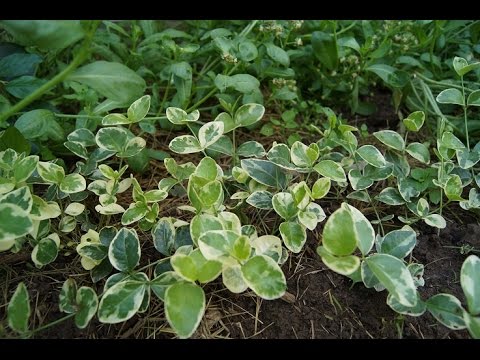

Watch this video on YouTube

